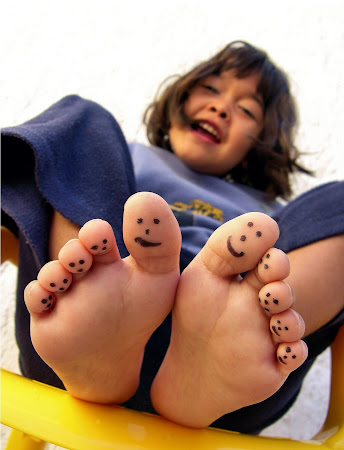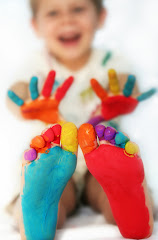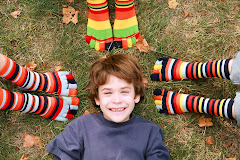Pediatric heel pain is very different than adult heel pain. With adult heel pain, the pain is intense when getting out of bed in the mornings or after sitting for long periods of time. The pain subsides after walking around a bit. In pediatric heel pain, the pain usually doesn't improve in the same manner, it usually becomes worse with walking around. Heel pain is common in children because of the very nature of their growing feet. Because their feet are continually growing, the heel bone (the calcaneus) is not fully developed until the age of 14 or older. Until the heel bone is developed, new bone is forming at the growth plate (the physis). This is a weak area located at the back of the heel. Too much stress on the growth plate is the most common cause of pediatric heel pain.
Symptoms of pediatric heel pain include:
- Pain in the back or bottom of the heel
- Limping
- Walking on toes
- Difficulty participating in usual activities or sports
 If your child has any of these symptoms, you should see a podiatric specialist to determine the underlying cause of the pain to determine a plan of treatment. There are a number of possible causes for a child's heel pain. Some of these causes may include:
If your child has any of these symptoms, you should see a podiatric specialist to determine the underlying cause of the pain to determine a plan of treatment. There are a number of possible causes for a child's heel pain. Some of these causes may include:- Calcaneal apophysitis. More commonly known as Sever's disease, this is the most common cause of children's heel pain. This is not a true "disease", it is an inflammation of the heel's growth plate due to muscle strain and repetitive stress. This especially occurs in children who are active or obese. This condition usually causes pain and tenderness in the back and bottom of the heel when walking and is painful when touched. This condition can occur in one or both feet.
- Tendo-Achilles bursitis. This condition is an inflammation of the fluid-filled sac (bursa) located between the Achilles tendon and the heel bone. Tendo-Achilles bursitis can result from injuries to the heel, certain diseases like juvenile rheumatoid arthritis or wearing poorly cushioned shoes.
- Overuse syndromes. The heel's growth plate is sensitive to repeated running and pounding on hard surfaces. Because of this, pediatric heel pain often reflects overuse. Children and adolescents are especially vulnerable if they are involved in soccer, track or basketball. A common overuse syndrome is Achilles tendonitis. This inflammation of the tendon usually occurs in children over the age of 14. Another common overuse syndrome is plantar fasciitis. This is an inflammation of the band of tissue (the plantar fascia) that runs along the bottom of the foot from heel to toes.
- Fractures. Heel pain is sometimes caused by a break in the bones. Stress fractures(hairline breaks resulting from repeated stress on the bone) often occur in adolescents engaged in athletics, especially when the intensity of training suddenly changes. In children under the age of 10 acute fractures can simply result from jumping 2 or 3 feet from a couch or stairway.
 |
| Arch Angel Childrens Comfort Insoles |
You can also reduce your chances of developing heel pain by avoiding obesity, choosing well-constructed and supportive shoes that are designed appropriately for your child's activity. Also avoid or limit the wear of cleated athletic shoes as well as avoiding activity that is beyond your child's ability.
If your child has any of the symptoms listed above or concerned about your child's foot health, please contact our office at 419-423-1888 to schedule an appointment with Dr. Vail or visit our website at http://www.vailfoot.com/.








